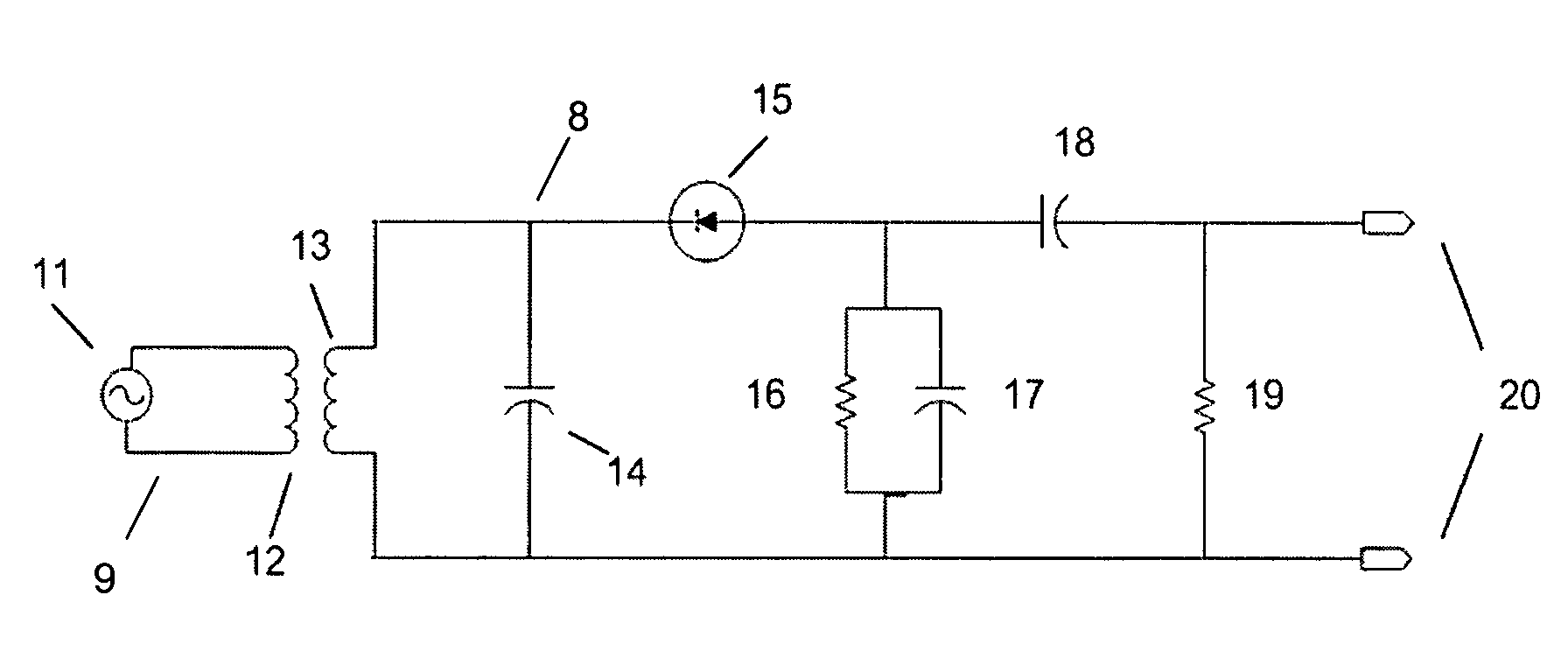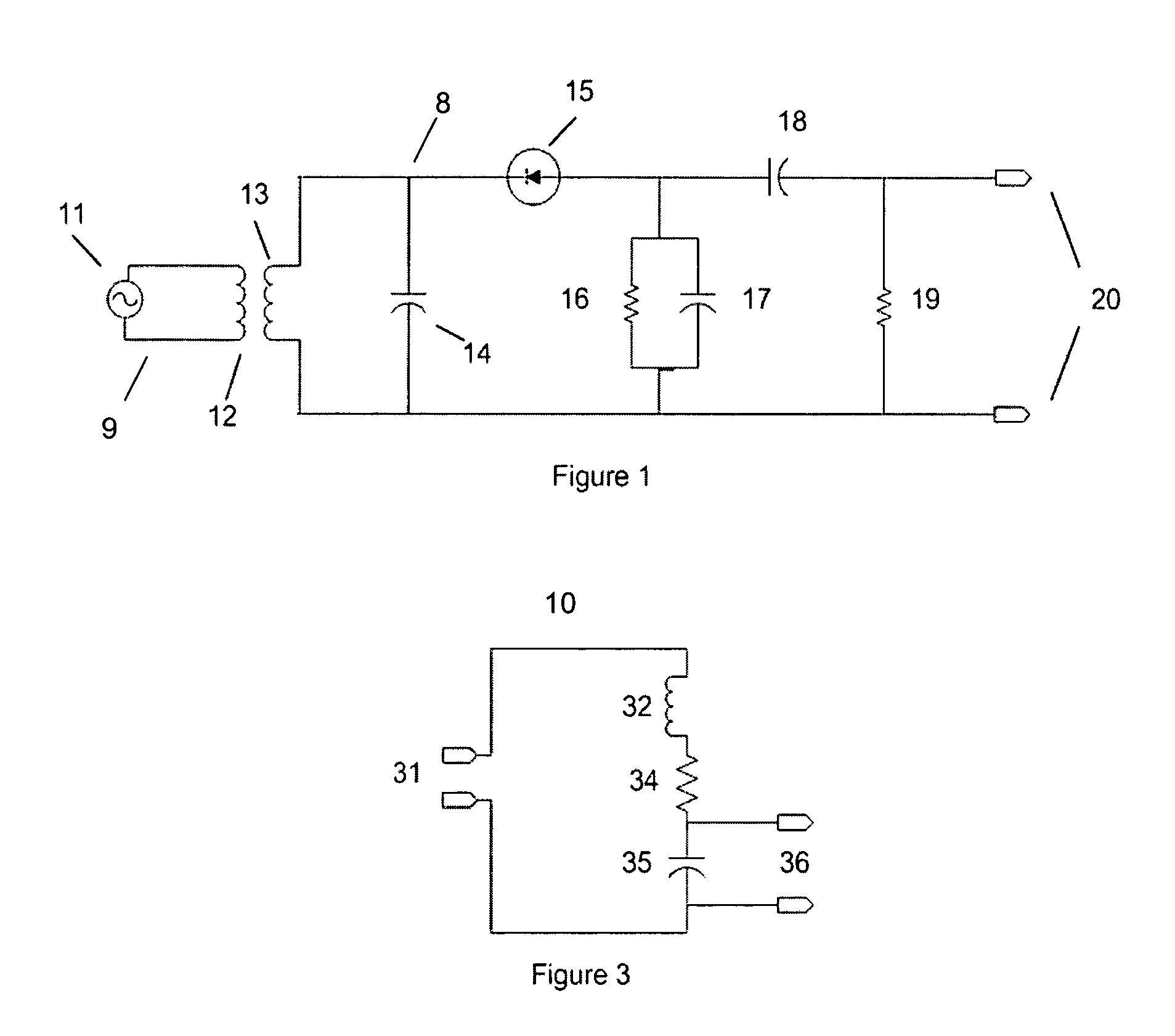System and method for tagging and detecting surgical implements
a surgical implement and tag technology, applied in the field of surgical sponges, can solve the problems of inability to detect surgical instruments, and foreign objects left in the body, and achieve the effect of flexible huts and reliable detection
- Summary
- Abstract
- Description
- Claims
- Application Information
AI Technical Summary
Benefits of technology
Problems solved by technology
Method used
Image
Examples
Embodiment Construction
[0024]By reference from Communications Electronics Circuits second edition by J. J. DeFrance Rinehart Press, 1972, page 242 to FIG. 1, an exemplary description is made of a diode detector for the demodulation of electromagnetic waves. Means 9 for transmitting an electromagnetic signal includes an oscillator 11 and a loop antenna, depicted as an inductor 12. While the oscillator in this embodiment operates preferentially at 13.56 MHz, other frequencies may also be used. The tag 8 is attached to a surgical implement (not shown) and adapted to be inserted into a surgically exposed human body cavity includes means for receiving the transmitted electromagnetic signal and converting this electromagnetic signal into an electric signal. The means for receiving the electromagnetic signal is depicted as an inductor 13 which is also preferentially a wire loop antenna that is part of the body resonance detector circuit. The values of this inductor and its corresponding capacitor 14 are selected...
PUM
 Login to View More
Login to View More Abstract
Description
Claims
Application Information
 Login to View More
Login to View More - R&D
- Intellectual Property
- Life Sciences
- Materials
- Tech Scout
- Unparalleled Data Quality
- Higher Quality Content
- 60% Fewer Hallucinations
Browse by: Latest US Patents, China's latest patents, Technical Efficacy Thesaurus, Application Domain, Technology Topic, Popular Technical Reports.
© 2025 PatSnap. All rights reserved.Legal|Privacy policy|Modern Slavery Act Transparency Statement|Sitemap|About US| Contact US: help@patsnap.com



